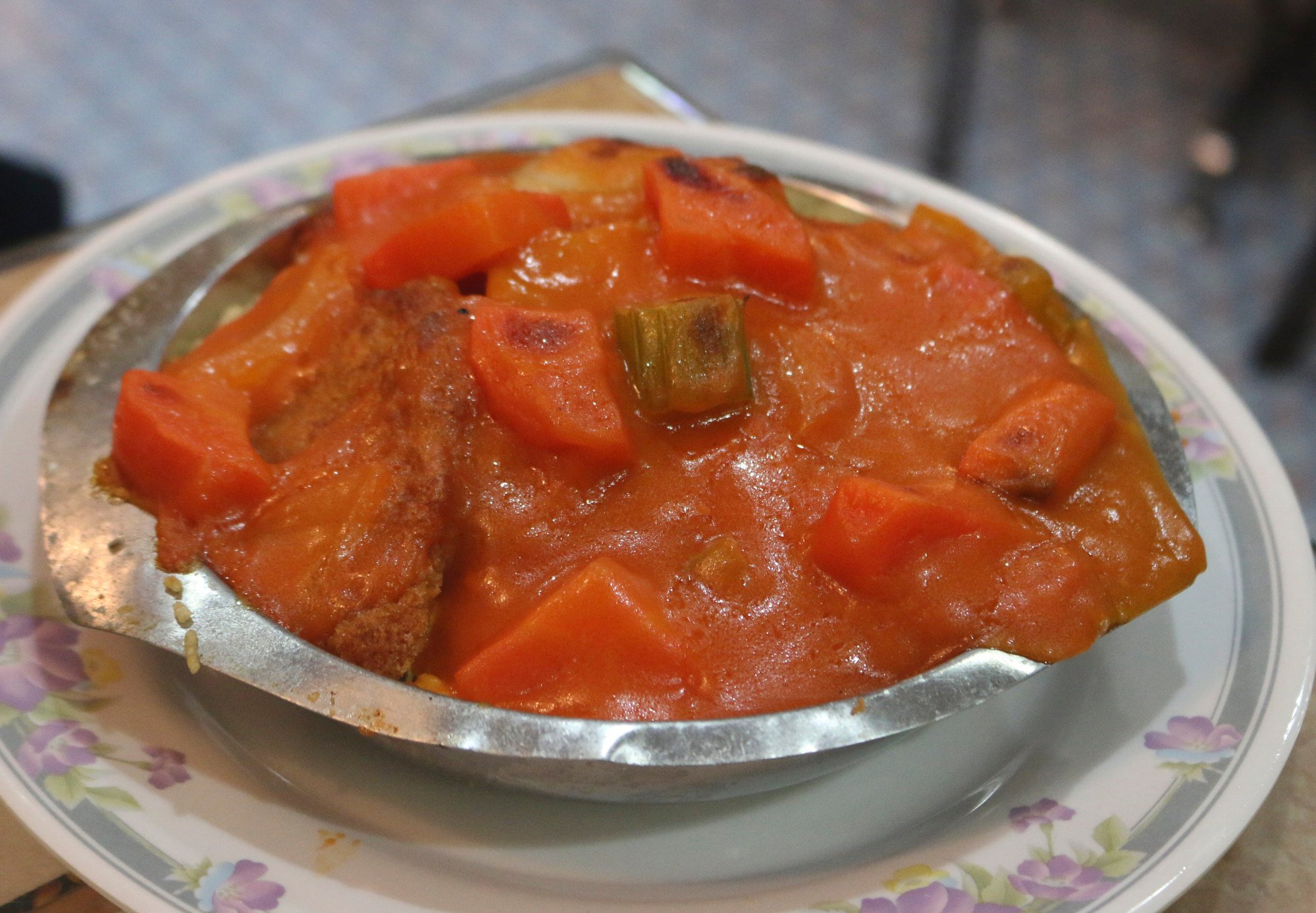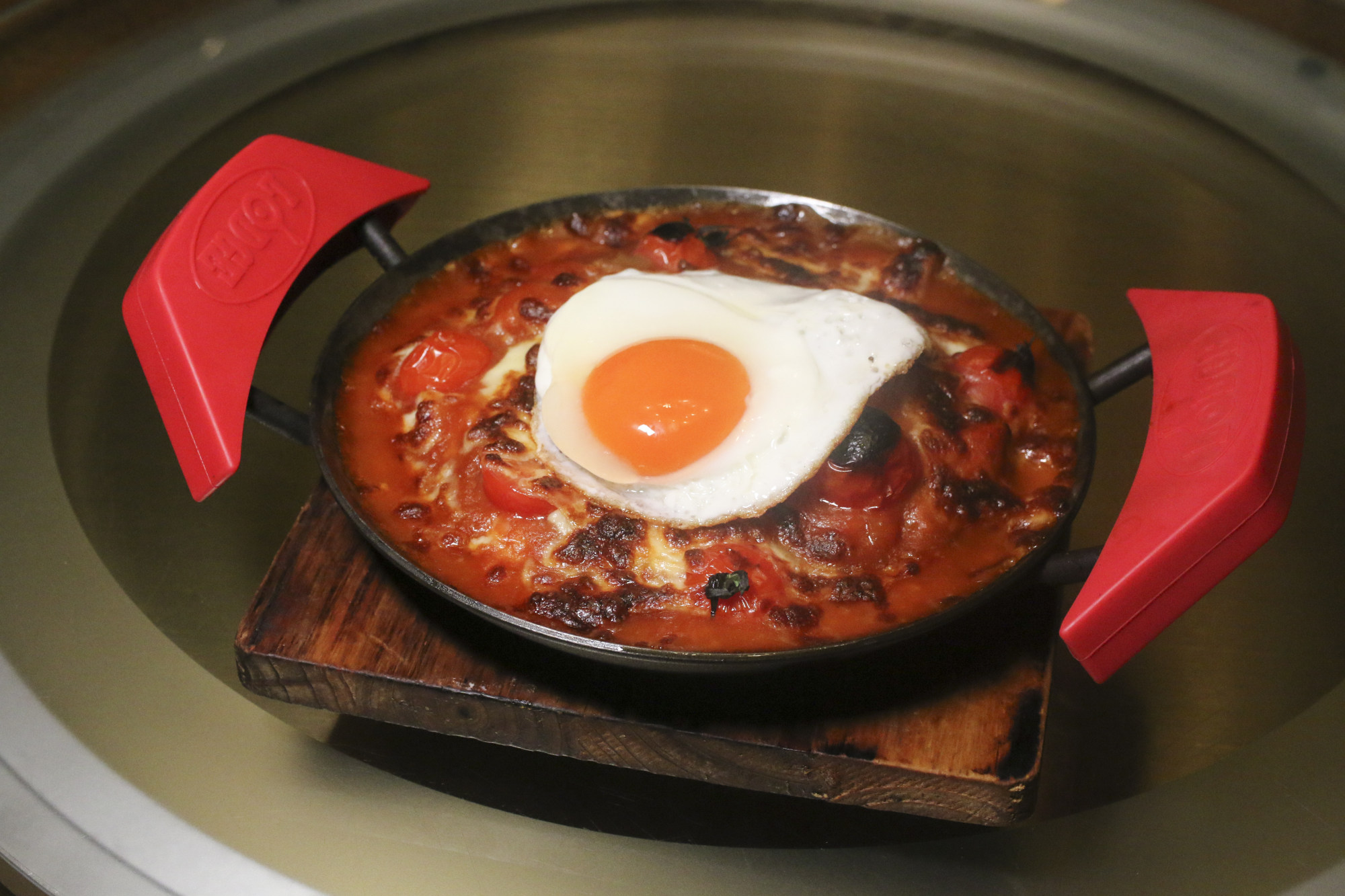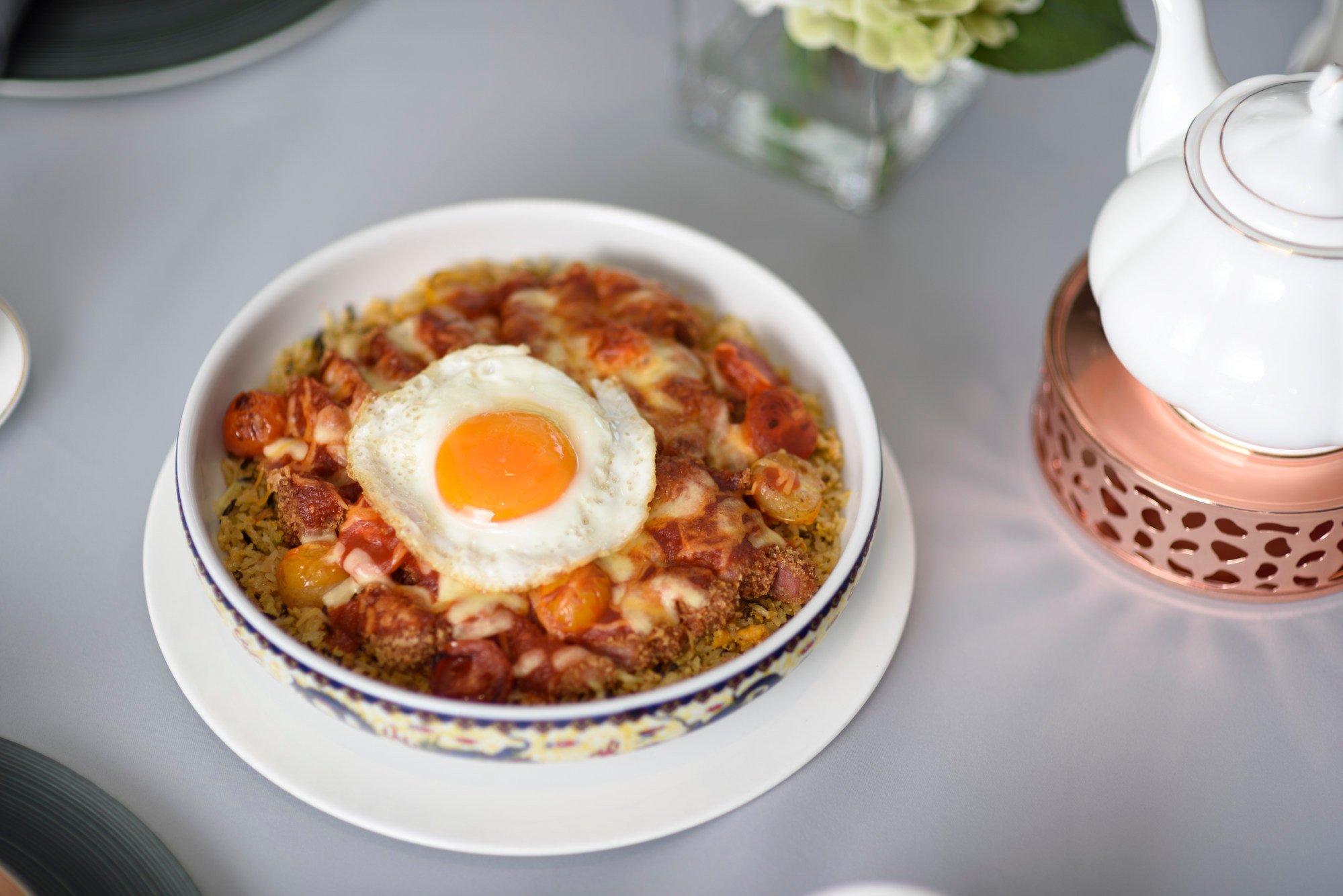
Baked pork chop rice: the history of a defining Hong Kong comfort food, its humble roots and the fine-dining versions with premium imported pork and rice
- Melted cheese, tangy-sweet red sauce, seasoned pork chops and egg fried rice – baked pork chop rice is one of the defining comfort foods for Hongkongers
- The dish can be enjoyed across the city, from ‘soy sauce Western’ restaurants as part of a set lunch to fine-dining restaurants that use exclusive ingredients
A lunch crowd gathers at a cha chaan teng, the Hong Kong equivalent of a greasy spoon. Staff brush past carrying scalding milk teas, scrambled eggs on toast and instant noodles.
But every so often, a show-stopper enters the fray: you’ll spot its toasty leopard spots of caramelised cheese crust atop a matt blanket of red sauce, coating seasoned pork chops draped across a bed of fried rice.
Everything about the guk ju pa fan – baked pork chop rice – feels right, and it is one of the defining comfort foods for generations of Hongkongers. It ticks all the boxes – sweet sauce, a good fried rice and a great helping of protein. What’s not to like?

Now with several branches in Hong Kong, Tai Ping Koon’s East-meets-West approach matched the novelty of the time of applying Chinese influences and palate preferences to Western dishes. Here, an egg fried rice is topped with a crispy deep-fried pork chop and laid over with a sweet tomato sauce, which is fortified with port wine to add depth.
The dish remains a popular item on the menu 163 years later. Today, pork chop rice continues to evolve, and the version served at Luen Wah, in Sai Ying Pun, is frequently hailed as the best in town. Available throughout the day, diners can expect an extended wait during the busiest lunch periods.
But what is it that keeps customers coming back for more? Since introducing the dish in 1964, Luen Wah has altered its original recipe slightly to create a tangier, thicker sauce by adding more ketchup to the mix.
It goes over the Japanese cutlet-style bone-in pork chop, which is breaded and fried to help the sauce adhere to the surface while the meat remains juicy. Chunks of carrot, celery and onion enrich the sauce as well as the texture of the dish.

Baked pork chop rice gained more popularity thanks to mainstream fast food restaurants such as Café de Coral, which introduced its version in 1990, slowly revising it over the past three decades: more tomatoes, a sweeter sauce and a thicker pork chop, and served with a drink, all for the price of a flat white at a speciality coffee shop.
Besides its popularity in the fast-casual sector, baked pork chop rice has been upgraded in many Hong Kong restaurants, where the dish has been tweaked to show off exclusive ingredients sourced from around the world.
Stand-out versions include the offering at Flower Drum, in Wan Chai, where chef-owner Nansen Lai Siu-fung’s take on the traditional baked pork chop rice with egg, is among the restaurant’s most popular lunch menu options – one that costs a jaw-dropping HK$190 (US$24) per serving. But Lai believes the quality of the ingredients justifies the price tag.
“The aroma of Thai jasmine rice is rich even though the grains are looser and less glutinous in texture, which is why we add a proportion of Japanese short-grain rice to the mix to enrich the texture,” Lai explains.
Lai prepares a proper egg-fried rice, first stir-frying eggs in a hot wok, breaking the quickly set egg into tiny confetti flakes before adding the rice for a few quick tosses. A second helping of beaten egg is added at the end to make sure every grain of rice is coated.
The savouriness of the rice pairs well with the sweet tomato sauce made with fresh tomatoes from the Netherlands.

The cast iron keeps the rice warm at the time of serving, and the presentation, with a crusty layer of blistered mozzarella under the glorious crispy-edged sunny egg, is full-on satisfaction.
Not far away, in Pacific Place, Admiralty, another modern version of the dish gets a brilliant twist. The Hawk & Aster is an all-day diner with a wide-ranging menu of international favourites.
The Iberico cabecero (pork collar) – a cut with a wonderful texture – is deep-fried with rolled oats instead of breadcrumbs, enhancing its crunchy texture. It’s topped with shaved black truffles and finished with a fried egg on top.

Shao is no stranger to the dish. As a rice-loving Chinese chef, his decision to put the baked pork chop rice on the menu was simple.
“My experience with local guests is that they are all looking for dishes that taste good, and a great baked pork chop rice brings them not only satisfaction on the palate, but also nostalgia for the kind of dishes that they used to order a lot in the past,” Shao says.
Like Lai, Shao’s main focus is on the rice, which is partially steamed before frying to ensure every grain is cooked. A generous helping of chopped spring onions is added, as well as a spoonful of rendered lard to enhance the aroma of the old-style fried rice.
Shao cuts pork from Okinawa into thick chops and marinates them with a purée of mixed vegetables and papaya juice; the fruit’s enzymes help tenderise the meat to give it a soft, almost creamy texture.
A breadcrumb coating before deep-frying allows the crust to firm up and stay crunchy even with the addition of the tomato sauce, made with a melange of fresh tomatoes and a topping of three cheeses (cheddar and mozzarella for flavour and that Instagrammable cheese pull, and Parmesan for a toasty crust) that yields along with the molten yolk of the fried eggs.
For Shao, timing is what makes or breaks his pork chop rice, with precision vital when it comes to frying, dressing and serving.
Outsiders might wonder about the appeal of baked pork chop rice and why it is so significant in Hong Kong food culture – but just look at the Facebook group Hong Kong Baked Pork Chop Rice Concern Group. Founded in December 2020 and dedicated to finding the perfect baked pork chop rice, it has grown to more than 12,000 members.
There is no short explanation for its enduring appeal, but as a cha chaan teng staple, it is often a reliable choice – a dish that is unlikely to disappoint. My own theory is that essentially it is a hybrid dish that represents the best of Chinese-Western fusion and the creativity of Hongkongers.
Baked pork chop rice, while seen as humble, is not just fried rice topped with fried pork and sauce. The dish requires a great deal of experimentation to get it right – and it’s far from half-baked.
Where to eat baked pork chop rice in Hong Kong
Tai Ping Koon, 60 Stanley Street, Central, tel: 2899 2780.
Luen Wah Cafe, 28 Centre Street, Sai Ying Pun, tel: 2540 1563.
The Hawk & Aster, Shop 8, LG1/F, Pacific Place, Admiralty, tel: 3501 8557.
Mián, The Murray, U/G, The Pavilion, 22 Cotton Tree Drive, Central, tel: 3563 6405.
Flower Drum, Shop B, 2/F, Linway Court, 69 Stone Nullah Lane, Wan Chai, tel: 6382 9826.

